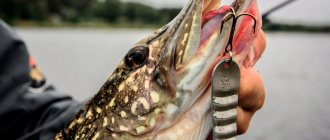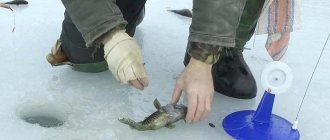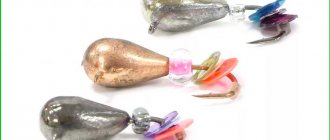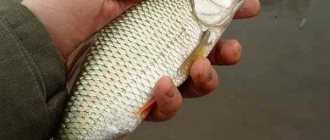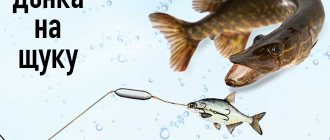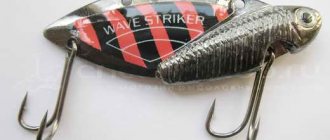Bait for fishing
Let's start with the fact that the live bait should be from 4 to 10 cm and, most importantly, it should be quite mobile. Otherwise, if the bait dies, the pike will simply lose interest in it. Pike is better caught using live bait, which is caught in the same reservoir where the pike itself is found. I recommend these live baits:
- Rotan
- Perch
- Roach
- crucian carp
- Gudgeon
You can attach live bait to the back, upper lip and gills.
What is the advantage of Plumb Fishing over Shore Fishing?
— First of all, the main advantage of vertical fishing from a boat is the wide coverage of the water area. Shore fishing is a stationary method of fishing, thereby limiting the fisherman's movements.
If you don’t catch fish, then nothing can be done, unlike vertical fishing. In the event that there are no bites, you can always change your location, thereby increasing the chances of ultimate success.
3 ways to improve your fish bite!
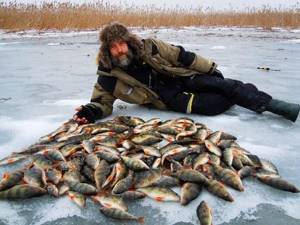
Over 15 years of active fishing, I have found many ways to improve the bite, and here are the most effective:
1. Bite activator . This pheromone additive attracts fish most strongly in cold and warm water. The Fish Hungry bite activator has proven itself to be excellent - Read more…
2. Tackle with increased sensitivity . You should first familiarize yourself with the features of using a particular type.
3. Pheromone baits . They attract the attention of fish, stimulate hunger and cause a schooling reflex, which allows you to collect a lot of fish in one place.
You can get the rest of the secrets of successful fishing for free by reading my other materials on the site.
3 ways to improve your fish bite!
Over 15 years of active fishing, I have found many ways to improve the bite, and here are the most effective:
1. Bite activator . This pheromone additive attracts fish most strongly in cold and warm water. The Fish Hungry bite activator has proven itself to be excellent - Read more…
2. Tackle with increased sensitivity . You should first familiarize yourself with the features of using a particular type.
3. Pheromone baits . They attract the attention of fish, stimulate hunger and cause a schooling reflex, which allows you to collect a lot of fish in one place.
You can get the rest of the secrets of successful fishing for free by reading my other materials on the site.
The second advantage of vertical fishing over shore fishing is its versatility. A fisherman fishing from the shore cannot immediately cover the entire list of fish living in the reservoir.
This is due to the fact that some species of predators live only in the depths, not getting close to the shore. Plumb fishing allows you to fish at almost any depth.
This significantly increases the chances of a successful outcome. In addition, vertical fishing from a boat is dynamic, so the fishing process becomes more exciting for the participant.
Features of catching pike with live bait at different times of the year
The behavior of this predatory fish directly depends on the time of year.
Spring
In the spring, starting from March, pike actively searches for food. Therefore, many believe that it is during this period that the biggest catch is made. The predator bites best near the shore.
Summer
But in summer, on hot days, it is best to catch pike in the cool time of day, for example, in the morning or evening. Cool, cloudy days are also suitable. In hot weather, this predator is very difficult and difficult to catch. During this period, fish often live in various snags, overgrown areas of the reservoir and shaded areas.
Autumn
In the fall, fish have a great appetite, so they will bite bait of any size. In autumn there is a high chance of catching pike at any time of the day.
Winter
In winter, pike are caught using girders on which bait is installed. After you have placed the girders, it is advisable to run next to them or walk, tapping something on the ice. This is a really necessary step, since the sounds of footsteps can drive the fish out of its hiding place.

What kind of live bait does pike prefer?
Based on this, live bait is truly a universal and very effective bait.
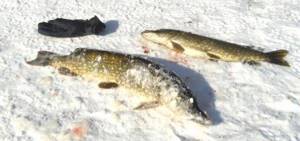
We also recommend reading:
Model range of Salmo wobblers and Salmo Hornet catalog Spinner for pike - 10 best and how to make it yourself? Features of catching pike on girders in winter and summer Attractant for predatory fish: bait for pike perch, pike perch
As for pike, roaches, perches, and brushes are well suited as live bait, but in general, the bait is selected depending on which fry lives in a particular body of water. That is, what the pike feeds on is what you need to catch it for!
Spinning
In addition to choosing a good and correct spinning rod for fishing, it is also important to know the intricacies of its use.
The spinning rod is equipped with medium-sized spinning reels. The length of the rod reaches from 1.3 to 4 meters. If you fish from the shore, it will be more convenient to use a spinning rod from 2.5 meters.
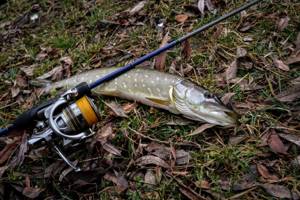
Pike caught with a spinning rod
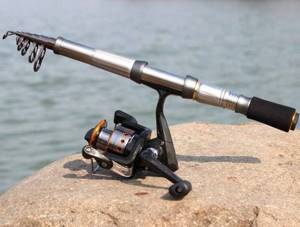
Spinning
Float rod
One of the most accessible basic ways to catch pike. The length of the rod should be no more than 4 meters; for a larger reservoir, use a rod from 5 to 6 meters. Don't choose a float that is too light or a float that is too heavy. An egg-shaped float will do.

Live bait fishing from a boat

Photo by the author
On the eve of real winter, the predator becomes active, hunting for small fish. At this time, it often stays away from the shore or at great depths, so there is a need to use a boat. There are many ways to catch a predator using float-based live bait gear from a boat.
Many predators: perch, pike, pike perch, ide and others in the fall gather in places where small food fish are concentrated. On reservoirs these can be algae-fringed bays with depths from 1.5 to 4 m. Often dense schools of algae, small roach and perch are concentrated near algae-fringed islands. At the mouths of dammed tributaries there are also a lot of small fish, which predators approach to hunt.
Moving to the fishing spot, they swim quietly, without rocking the boat. Having anchored (in windy weather it is better to stand on two anchors), they operate the gear without knocking. If possible, it is better to camouflage the boat by swimming in the seaweed or standing under a wall of reeds. In autumn, the water is clear, and the predator can easily notice the movements of the fisherman. In calm weather on calm water, you can use two or three fishing rods equipped in Bolognese style.
On calm water
When fishing in low-flowing reservoirs at depths of up to 4-5 m, you will need a float with a carrying capacity of 5 to 12 g, depending on the size of the live bait. The main line must be at least 0.03 mm thicker than the leash (if you take a 0.27 mm leash, then the main line should be no less than 0.3 mm). The fishing technique is as follows: having measured the shallowest depth of the reservoir, set the appropriate descent and release the live bait so that it is 30-40 cm from the bottom. For fishing in windy weather, use a special float-sail, which, under the influence of the wind, will pull the fishing line and allow the baitfish to move forward. When fishing in calm water, it is better to bait the bait through the back.
On the current in the wiring
Often the predator hunts small fish in the current. On rivers, concentrations of small fish can be found near rivers, near islands of algae and snags, near other water obstacles, near rapids, dams, islands, under coastal cliffs and in other places. The boat is installed taking into account how the live bait will be retrieved; usually its bow is oriented towards the current. In the fall, live bait is released near the bottom. In this case, they use a wire fishing rod with a fairly rigid rod and equipment made taking into account the catching of a particular type of fish, depth, current strength, and bottom topography. The reel is inertial with a large spool or inertialess. To prevent the boat from swinging from side to side, it is secured with one, or better yet, two anchors. To determine the depth, they use an echo sounder or depth gauge weighing at least 200 g. When fishing in the current or in windy weather, the angler sets up the boat and regulates the progress of the bait fish by releasing the fishing line from the reel, that is, he fishes in the wire, focusing on the places characteristic of the predator’s anchorage. When fishing downwind, instead of the float antenna, mount a small (preferably a goose) feather, the height of which is equal to the length of the float or a little more, and the width is 40-45 mm. This shape is obtained by cutting and slightly rounding the top of the feather.
Happy long holiday
On the channels of some rivers I was able to catch pike and perch with a long release of bait. Most often, a spinning rod with a reliable inertial or inertia-free reel that can hold up to 100 m of fishing line with a diameter of 0.32-0.35 mm is used for this. Lines with a larger diameter make it difficult to fish with a free release of the bait, so the optimal choice would be a small-diameter braid that can withstand the resistance of a large predator.
To carry out a long-distance release of the tackle (and sometimes, in order not to frighten the fish with the splash of the oars, it is necessary to remove the live bait from the boat at a distance of 30-50 m), the float must be large enough. For example, a pear-shaped float made of dense foam and having a diameter at the thickest part of 35-40 mm and a height of 60-70 mm. The lower part is painted with waterproof paint in an inconspicuous gray-blue color, and the upper part is painted yellow or white. A tall antenna with a ball at the end, painted in a bright color, so that it can be seen from afar is required.
For fishing at a depth not exceeding the length of the rod, it is better to use a fixed float mount, passing the line through its middle and fixing it with an antenna rod or a feather removed from the body of the float; For fishing at great depths, a sliding float mount with an upper stopper is used. The weight of the float must be well adjusted so that the fish does not feel much resistance from the tackle when biting. This corresponds to a streamlined sinker, usually an “olive” (one or two with a total weight of 10–20 g).
The leash for pike is thin metal, for other predators it is ordinary, made of fishing line with a diameter of 0.30-0.33 mm. The length of the leash is at least 25-35 cm. A carabiner must be placed between the leash and the fishing line to prevent the fishing line from twisting. Hooks are suitable single or double, sometimes triple, their sizes depend on the type of fish.
On the current from the bottom
If the current is too fast and the depth does not allow for high-quality fishing, then you can fish with live bait from the bottom. To do this, use a sliding sinker weighing from 15 to 100 g, which is placed on the bottom. The float is held above the water - the line is stretched between the float and the rod. The sinker can be round, like an “olive”, or flat. The second type of sinker lies more tightly on the bottom. At the end of the main line, the sinker is stopped with a windbreak, from which comes a long leash with a hook and live bait. Due to the force of the current and the length of the leash, the live bait is either raised or lowered above the ground or swings it from side to side. All this is very attractive to the predator. As the basis of the tackle, you can take a long spinning rod equipped with an inertial reel of the “Nevskaya” type. In this way you can catch pike, perch, pike perch and even burbot at different depths.
At great depths
When fishing occurs at great depths, it is more convenient to use onboard tackle, which is a cross between winter and summer fishing rods. Its length is no more than 1 m, it is equipped with a reel (quite small, inertial), throughput rings and sliding equipment corresponding to the depth and flow.
When the boat is moving
From a boat, you can fish with live bait float gear using the trolling method. In this case, one or two fishing rods attached to the sides or stern are used. You can use a wine bottle cap as a bite alarm and to hold the fry above the ground. It is capable of supporting medium-weight olives and live bait afloat. The latter should naturally follow the boat in the direction you choose, and therefore it is attached by hooking it by the lip. This method is good for fishing in reservoirs, lakes, dams and quarries. The fisherman must have certain skills and know the bottom of the reservoir well, and anticipate hooks on the bottom. On regulated rivers, where the current is quite calm, you can fish by moving by boat both up and down the river. For fishing, you should choose areas along the edges, near the border of coastal and island vegetation.
The fisherman's task is to row as slowly as possible so that the flow of water puts little pressure on the float. When rowing, live bait or fry can either fly above the bottom or drop to their original position. The boat should be directed along a wall of reeds or other vegetation that reaches depths of 1.5 to 4 m, and the rig should also be carried out along the snag. In deeper places, fishing with such gear is not very convenient.
Some inconveniences when fishing from a moving boat may occur in areas of the bottom with snags or algae, or when bites occur on two fishing rods at once. In the first case, you should stop, reel in the loose tackle and unhook the hook, in the second, calmly, without fuss, start landing fish one by one. When using two fishing rods, you must also take into account that the boat turns must have a large radius, otherwise the gear may get tangled.
Alexey Khludov November 14, 2014 at 00:00
Coil
You need to take the choice of reel seriously. Do not buy dubious reels from little-known or completely unfamiliar manufacturers. Look at the reviews, or take reels known from your experience. For spinning, spinning reels are often used. Choose reel spool sizes in the region of 1500-2000.
When fishing for pike, you can also use simple drum reels on a float rod.

Spinning reel

Reel for float rod
Choosing live bait for effective pike fishing
The type of fish is not so important for a predator based on its taste preferences; the basis of the diet is its familiarity with pike. The most suitable option would be live bait for pike from its habitat. For the fisherman, from this perspective the situation is a little different. He needs live bait material that, throughout fishing, will show its vitality and sufficient activity to attract the lured fish to attack. Next, we will present information on the optimal selection of the type of fry and describe some methods that allow you to quickly catch live bait.
What kind of fish is suitable for bait?
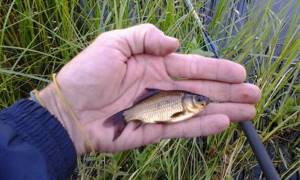
Catching fish with live bait initially implies excellent endurance of the live bait material, which makes it possible to install equipment for a long time without checking the bait, monitoring the gear only based on signs of the presence of a bite. Having decided on the species composition of the inhabitants of the fish fauna of the reservoir, the fisherman selects the most hardy fish species for equipment for fishing with live bait. The most tenacious and active fish species include crucian carp, gudgeon, carp and loach. The second echelon of live bait material includes roach, ruffe, silver bream and bream. The most sleepy and short-lived on the hook are perch, bleak, pike, roach and chubs.
Important! Ideally, gear for catching pike with live bait is initially loaded with heterogeneous material, moving on to more catchy baits as fishing progresses.
How to catch live bait
There are two optimal ways to catch live bait directly on the pond when hunting for catfish. The first method involves fishing with a fly rod in shallow water in a prime location. Bloodworms or maggots are used as bait; the fry react more actively to them than to plant baits. The bait is crumbly fish feed with the addition of attractants with a sweet taste. For example, a bag of vanilla in the feed will lure almost any type of carp fish to the table at the bottom.
The second method is more mining and is based on the use of a fine-mesh lift. The lift is allowed in dimensions of 1x1 meter. Fry are also caught in the shallows, but closer to the thickets or coastal overhangs. In such places, fry hide from predators in whole flocks. If the activity of the fish is weak, the option of feeding bait on the canvas of a lift installed at the bottom of the reservoir will be useful. Only in this case is the lifting of the device done after a longer period of time. When caught, the material is sorted, selecting the desired size of baitfish and focusing on its hyperactivity.
Important! If possible, live bait fishing should be planned in advance of fishing. Otherwise, the absence of a fry will derail any well-developed strategy. If you have doubts about the possibilities of catching bait in a reservoir, then it is better to play it safe by purchasing bait for at least one batch of bets.
Storing Live Bait
The caught fish should be supplied with at least half of the fishing gear. Based on this requirement, the angler must be able to keep the bait in perfect condition. The fry is most susceptible to oxygen starvation, and this is especially noticeable in extreme heat. If crucian carp can live in captivity for several days in the shade and with frequent changes of water, then roach without aeration will not last even two hours in a live bait bucket. Therefore, a pike fisherman should have a small battery-powered compressor in his arsenal. A live bait bucket of seven or ten liters for thirty fish bait is a completely suitable vessel.
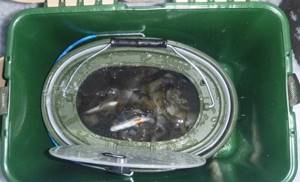
In winter, insulated versions of dishes with a smaller volume are used for more convenient transportation, and the oxygen deficiency in cold weather practically disappears for any type of live bait material. To store live baits at home, containers starting from forty liters are used. Cannas are installed in cool places and preferably in unheated rooms; a balcony in an apartment is a completely suitable place, only by insulating the containers in severe frosts and freeing the surface of the water from ice crust formations. In the summer, to store the nozzles, they are placed in refrigerators in containers of suitable volume on the lower shelves. With proper temperature and oxygen conditions, even roaches in captivity live for three to four months.
Important! The fish are fed no more than once every two weeks with a minimum amount of fish feed and the water is changed the next day.
Hooking
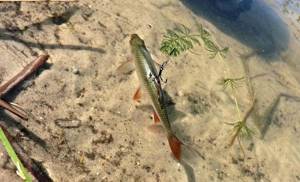
The attachment of live bait to the hook depends on the type of fish and fishing conditions. As hooks, both single hooks with an elongated fore-end and double hooks are used, as well as rigs where the use of tees does not affect the survivability of the nozzle. You can mount a fish on a hook by piercing the back or tail of the bait with a sting. At the same time, pay attention to ensure that the fry’s spine is not damaged. In some cases, mounting the attachment by the lips is justified. The use of double hook shanks without soldering makes it possible to hook fish through the gills.
Important! This installation allows you to keep the fish in an active state for a long time, and when the float tackle is thrown onto a pike, the loss of bait is much less than when it is hooked on the back or lips.
fishing line
The reliability of landing your caught fish depends on the fishing line. Choose the thickness of the fishing line based on the weight of the bait.
- Monofilament line (nylon thread)
The advantage of this line is that it is quite strong, does not tangle, and, thanks to its transparency, is invisible in the water. This type of fishing line is most often used for fishing with a float rod. But the line also stretches well. This prevents the caught prey from being pulled out.
- Braided cord
Has higher strength. It stretches much worse, so it is easier to pull out the prey. Has various flavors to attract fish. Unfortunately, it gradually begins to absorb water, which prevents the use of wicker in winter at low temperatures.
- Fluorocarbon line
It is often used when fishing with spinning rods. Invisible in water, durable, wears out with difficulty, however, the price is higher than that of other fishing lines.
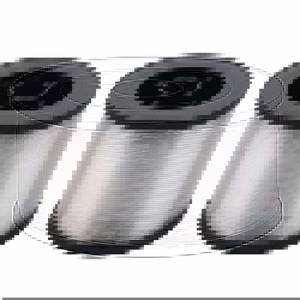
Monofilament line
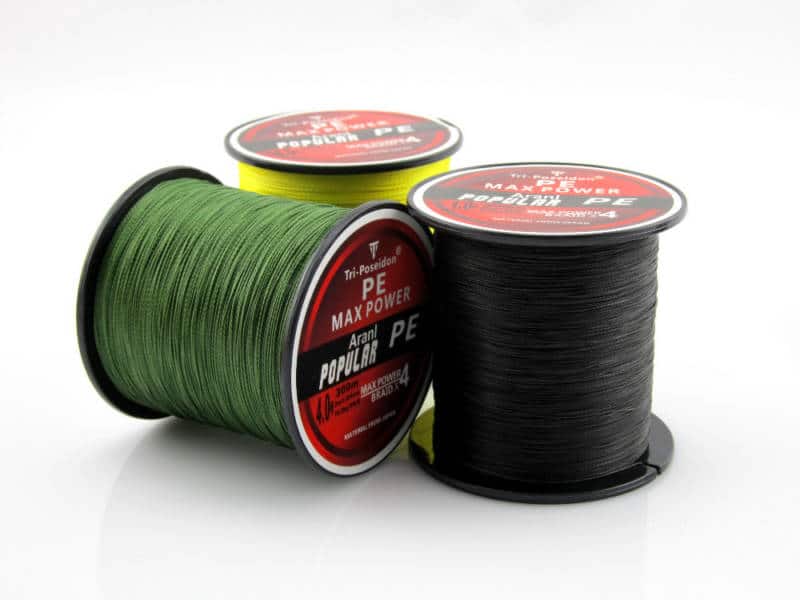
Braided cord
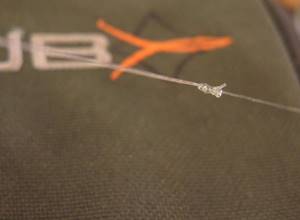
Fluorocarbon line
Fishing with silicone baits
At low water temperatures, the movements of the vibrotail should be very weak. At this time, extremely passive bait fishing is recommended. Make sure that the line is always taut even when the bait falls, otherwise you may miss the bite. If the water is cold, I choose lures of muted colors. Only in cases of severe cloudiness do I use shocking colors, such as yellow or red.
To reduce the number of empty hooks, use the so-called stinger - a tee on a short leash made of monofilament or braided fishing line. The tee is stuck in the back third of the bait’s body, and the leash is attached to the jig head. Even a very carefully pecking predator is reliably detected thanks to the tee.
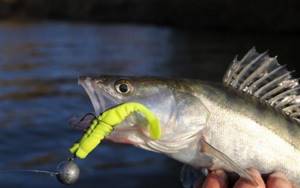
It is somewhat more difficult to keep the boat on the desired course during strong currents or wind drift. Using the motor, you need to maneuver so that the bait always plays directly under the boat. Having discovered an interesting place, you should immediately set up a marking buoy.
It is during the cold season that precision is needed to catch fish. I was convinced of this during a trip to one of the lakes, which was famous for its abundance of pike perch and pike perch. Using an echo sounder, I found an edge over which stood a school of forage fish. After only a short time, using passive bait, we managed to catch a 74 cm long pike perch and several beautiful perches.
However, at a short distance from the marking buoy, not a single fish was interested in the bait I offered. Predators stood concentrated below the food fish and did not want to pursue the bait at a great distance from them. If I had fished the edge area blindly, the results would probably have been significantly worse.
Sometimes, despite great accuracy and optimal placement of the bait, not a single bite is noted. This happens in particularly cold weather, when predatory fish move into deeper water horizons and become very distrustful of the baits offered.
Leash
- The fluorocarbon leash is transparent, but it is less durable than other leashes, so it is suitable for catching small specimens.
- Kevlar is quite soft and durable, the price is low.
- Titanium is a more durable leash, suitable for catching large pike, but the price is higher than previous materials.
- Steel - you can make such a leash yourself, for example, from old strings. The pike will not be able to chew through a steel leash, which is a plus.
Which leash is better, decide for yourself, based on the desired size of the caught predator.
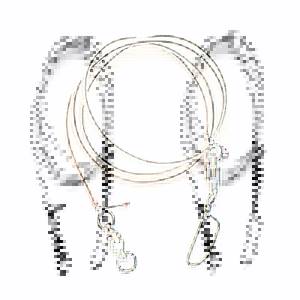
Kevlar leash
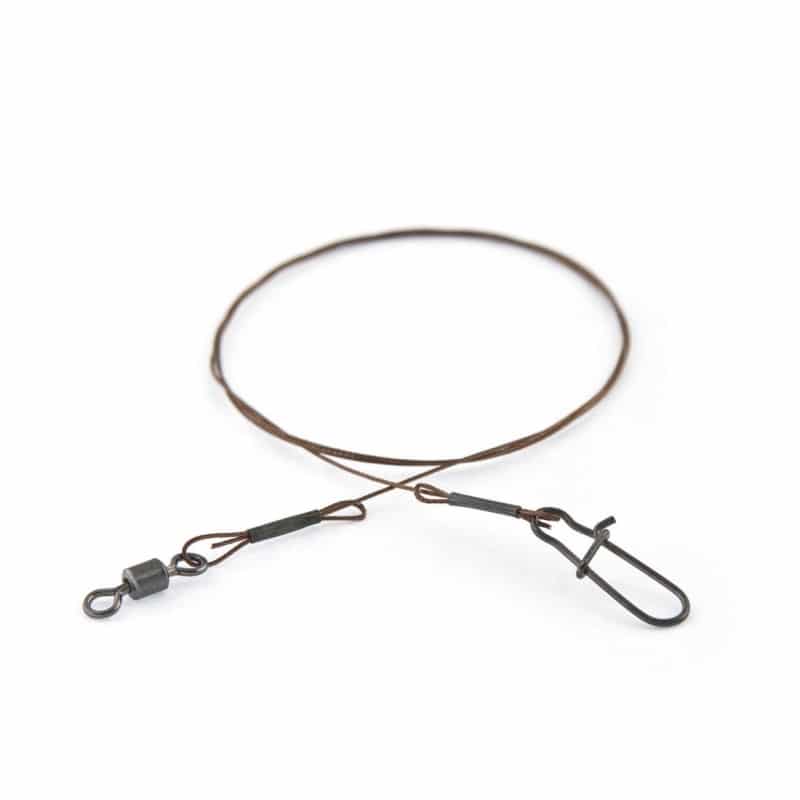
Steel leash
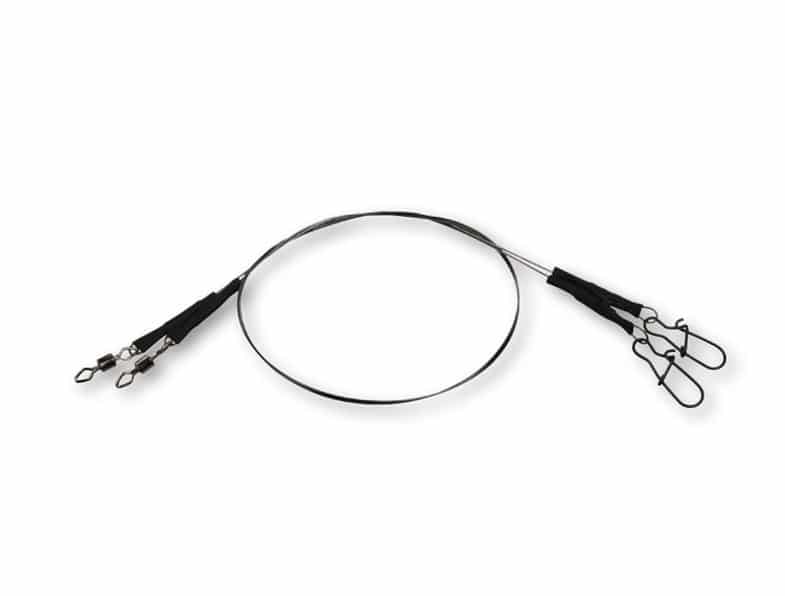
Titanium leash

Fluorocarbon leader
How to catch pike on a donk
![How to catch pike with live bait [vgodu]](https://korabel29.ru/wp-content/uploads/kak-pojmat-shchuku-na-zhivca-vgodu4.jpg)
Bottom tackle is quite popular among fishermen even now. It is quite easy to assemble. A fishing line is wound onto the spool, and the bait is attached to a hook, which is located on the leash.
The sinker is attached above the hook, but in some versions it is installed vice versa below.
The fishing rod is placed on a special stand on the shore.
A simpler option is a cast , consisting of a strong thick fishing line with a leash, hooks, a reel at the beginning and a weight at the end.
![How to catch pike with live bait [vgodu]](https://korabel29.ru/wp-content/uploads/kak-pojmat-shchuku-na-zhivca-vgodu5.jpg)
Features and options for gear and equipment
You can catch pike throughout the year using the following live bait gear:
- girders;
- mugs;
- postavushi;
- live bait float rods.
Let's celebrate! Each of these gears has features, both in design and equipment.
Zherlitsy
Depending on the fishing season, there are two types of girders:
- Summer - a classic summer rig is a slingshot cut from hazel, alder, willow, on which 10-15 meters of fishing line with a cross-section of 0.3-0.5 mm are wound in a figure of eight with a sliding olive sinker and a metal leash with a double or triple hook at the end . To fix the fishing line with baited equipment, a slot is made at the end of one of the slingshot branches. When it grabs, the predator pulls the fishing line out of this slot, unwinds its entire supply from the slingshot, and then hooks itself.
Such girders are installed on rivers, ponds, and lakes. To attach it to a pole, tree, or bush stuck into the bank, a strong nylon cord is tied to the upper part of the slingshot.
- Winter - the equipment of these girders has only one significant difference with summer ones: in winter the pike does not resist so fiercely, so the main fishing line is used with a cross-section from 0.25 to 0.35 mm. Structurally, winter girders are a stand (plastic, wood, metal) with a coil attached to it. The stand is inserted into a rectangular or round stand with a slot for fishing line.
To signal a bite, a spring with a flag made of bright fabric at the end is installed on the top of the post or in a groove on the stand. After the equipment with live bait is installed at the required depth, the spring with the flag is inserted into the reel - when grabbed, the reel rotates and the flag straightens when released, notifying the angler about a bite.
Note! Winter perches are used throughout the winter season - after the first and last ice, they are placed along coastal thickets of dry reeds, reeds, near flooded trees and bushes. In the middle of winter, these tackles are most effective when fishing in deep holes, sharp drops, and whirlpools.
Mugs
The circles represent floating (drifting) girders.
Structurally, the circle consists of:
- A cork or foam disk with a diameter of 12-13 cm and a thickness of 2-2.5 cm with a groove along the rim for winding equipment. To fix the fishing line when fishing on the rim of the disc, there are two slots on opposite sides. The working side of the circle (the one that is on top when the vent drifts) is painted red, the reverse side is white.
- Mast - a wooden or plastic pin inserted into the central hole of the disk and having a slot at the top.
Such a floating vent works as follows:
- The measured required amount of fishing line with bait attached is threaded through the slots on the disk and at the top of the mast.
- The circle drifts under the influence of the current or wind until the pike grabs the bait - under the action of the mast lever, the circle turns over, the fishing line jumps out of all the slots and the predator, as a rule, having reeled it in completely, hooks itself.
- The angler determines that the circle has worked by the change in color of the surface of the circle and the rotation of its disk.
The equipment of the circle is similar to the equipment of the girders described above.
Good to know! They fish with mugs from a boat in places with a slight natural or wind current, the presence of aquatic vegetation, snags, holes and pools. For fishing, they choose areas with constant depths of 200-400 meters - tony.
Postavushi
Postavusha is a live bait tackle for catching not only pike, perch, pike perch, but also ide and chub.
This gear consists of:
- A wooden reel or large diameter plastic reel.
- A rig consisting of 5-7 meters of strong monofilament fishing line with a cross-section of 0.4-0.6 mm, at the end of which a pear-shaped sinker weighing up to 50 grams is tied. Above the sinker, at a distance of 30-50 cm from each other, loops are made, to which two leashes 40-45 cm long are tied from the same thick fishing line with double or single hooks.
The tackle is baited and installed from the shore or boat, secured with fishing line from the equipment on reed bushes, branches of trees and bushes growing above the water.
Good to know! They catch pike with hooks throughout the summer on small and medium-sized rivers, ponds, and lakes. They install the staves at this time early in the morning or in the evening.
Live bait fishing rod
A live bait float rod is a fairly catchy tackle consisting of:
- Rods – when fishing from the shore, use Bolognese or fly carbon or composite rods with large dough and a length of 5-6 meters.
- Reels – when using a Bologna rod, spinning reels up to 1000 in size are used
- Equipment - 20-30 meters of strong fishing line with a cross-section of 0.25-0.3 mm wound on a spool, a heavy large float with a bright color and a large weight, a sliding olive sinker, a metal or a line leash folded from two strips up to 40-50 cm long with a large single or double hook at the end. When fishing in the current, use equipment with a heavier sinker located at the end of the fishing line and a leash with live bait located above it.
Good to know! You can catch pike with this gear from the shore and boat throughout the open water season in places with standing water or a slight current.
Techniques for catching pike with live bait
Spinning
- Carefully cast the bait bait on the hook. There is no need to try to cast over a long distance; up to 15-20 meters will be enough.
- Beginners are advised to slowly reel in the fishing line with pauses, simultaneously tugging the end of the spinning rod.
- Hooking is carried out after each bite. It's important to let your prey get tired.
- Now the main thing. Fishing. As soon as you feel the predator moving underwater, pull the line. Then slowly lift the rod, and then lower it down with a sharp jerk. Next, the fishing line is reeled in very quickly. If the fish resists, raise and lower the spinning rod several times until the pike gets tired and it becomes possible to bring it into the landing net.
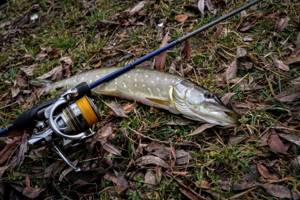
Features of fishing with live bait in autumn
You can use live bait to catch pike in the spring and autumn; in the summer, this type of gear will not work very well. Autumn fishing will have many differences and features from fishing immediately after the ice melts:
- Size of live bait: in the spring they use very small fish; autumn fishing will require larger specimens.
- The quality of the components used for the equipment: in the autumn it is necessary to take more reliable cords, fishing lines, and leashes.
- Accordingly, larger hooks are used for bait.
- In the fall, additional live bait can be equipped with a treble hook in the tail.
Advice! You should not use very large live bait; it can scare away even a large specimen of a predator.
Now it has become clear how to catch pike with live bait correctly; the process is quite exciting and productive. The main thing is that the tackle does not fail, and the fisherman’s self-control does not fail.
You can ask your question to our author:
